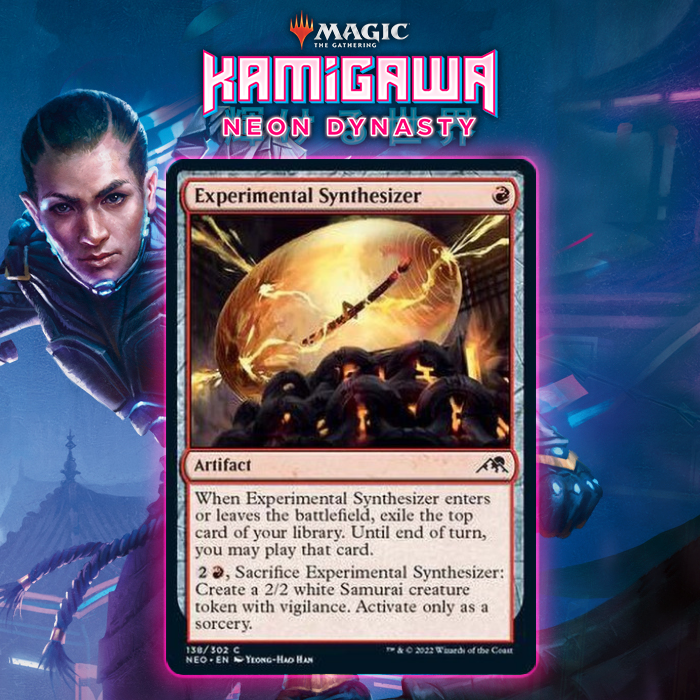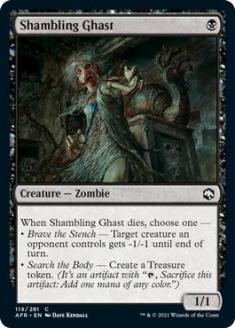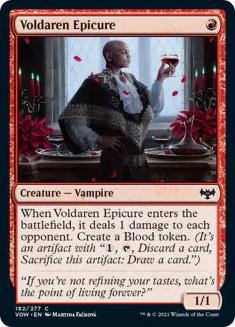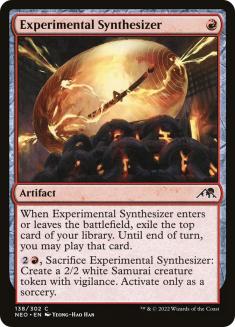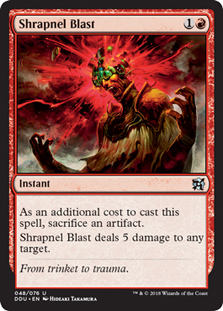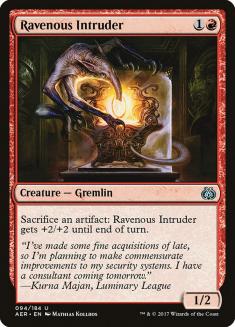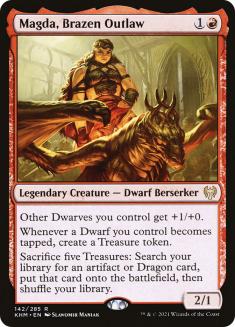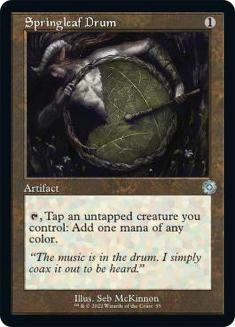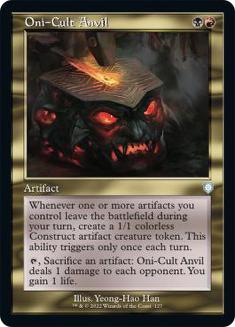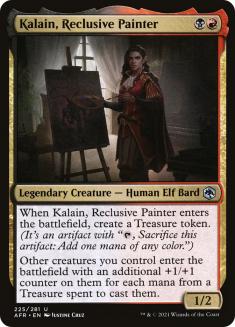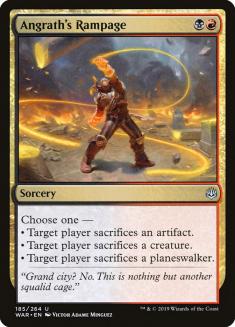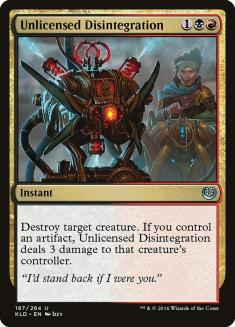Whenever I’m looking through a new set, I’m generally looking for one of two things.
First are the powerful build-around cards. These are high-upside cards, but it generally takes some time to find the right supporting cast to maximize their strengths and compensate for their weaknesses. I’d rather be ahead of the curve here; once a competitive shell becomes known, it’s only a matter of time before the metagame reacts and adapts to the new deck. Last week I wrote about Tezzeret, Betrayer of Flesh, which falls into this category.
Second are the efficient role-players. These cards often get overlooked because they don’t carry an archetype by themselves, but they often are the cards that give a fringe archetype the last push it needs into competitive viability. And the key in finding these cards is to look at the cheap spells in the set. Any time you can get significant impact from a one-mana spell, you’re giving yourself more versatility, consistency, and speed. You get versatility because you have more options for sequencing, consistency because you can survive on lower land counts more easily, and speed because your curve is lower so you double-spell earlier and more often.
I’m always on the lookout for one-mana spells with lots of text, which is why I declared Shambling Ghast and Voldaren Epicure as among the most underrated cards in their respective sets. Both have gone on to competitive success in multiple formats and in multiple archetypes within months of their release.
Kamigawa: Neon Dynasty has another such card in Experimental Synthesizer.
For one mana, you’re getting 41 words of text, which as a number scientist I can tell you definitively is a good rate. It also means there’s a lot to unpack here.
The first ability is the meat of the card, so I’ll start there. Your initial return is another card, making Experimental Synthesizer a red cantrip. In typical red fashion, you’re forced to play the card immediately, so this isn’t a cantrip you’ll want to cast on Turn 1, but it can help you find an early land drop and later in the game is assuredly going to draw a card.
That restriction is key to finding the right home for the card because you want to have the option to cast Synthesizer early in the game and reliably draw a card off the trigger. This means you’ll want to play Synthesizer in a deck with a low curve, so with one or two mana left open you’re likely to hit a spell you can cast or a land you can play.
But importantly, you also get the trigger when Experimental Synthesizer leaves the battlefield. That means your cantrip becomes a Divination if you can sacrifice it, blink it, or bounce and recast it. However, because you need to have mana open in order to leverage the trigger effectively, sacrificing it is the best option. Blink and bounce effects generally require a larger mana investment than sacrifice effects, since the latter are more often activated abilities from permanents like Ravenous Intruder. Bounce effects also usually require you to invest a full card, so you’re not actually generating any card advantage, which is the goal here.
Note that sacrifice decks want to have low curves because it’s important to deploy all the pieces of the engine as quickly as possible, so Experimental Synthesizer should play very well in those strategies, so long as you can sacrifice it reliably. This means you’ll need other artifacts to sacrifice, and unfortunately Standard doesn’t have the depth of good, cheap artifacts to fill out a strategy like this. So I’ll be looking to use Synthesizer in older formats.
The activated ability on Experimental Synthesizer won’t come up that often if you’re playing it alongside sacrifice or blink effects, but the fact that it’s there is important for making the card good enough for competitive play. It’s important because it raises the card’s floor significantly. Sacrificing it for free to generate a cheap Divination that enables your deck’s synergy is the ideal, but you have to win even if things don’t go according to plan. With the activated ability, you can sacrifice it for value even when you have nothing else going on, and the creature token it makes is a nice bonus.
So if your opponent has removed your sacrifice outlets or you’re just flooding, Experimental Synthesizer is still going to be a good card. Synergy-driven decks often lack that kind of consistency, falling apart when they don’t get their engine online. So the high floor on Synthesizer gives you much-needed resilience and consistency.
I started with a simple brew for Pioneer, sticking to Mono-Red:
Creatures (22)
- 4 Hangarback Walker
- 4 Bomat Courier
- 4 Ravenous Intruder
- 3 Magda, Brazen Outlaw
- 3 Goldspan Dragon
- 4 Voldaren Epicure
Lands (20)
Spells (18)

While Experimental Synthesizer was the impetus for building all these decks, I doubt you could stay Mono-Red without the printing of Voltage Surge in Kamigawa: Neon Dynasty as well. You want to interact early, and Surge as a cheap removal spell lines up perfectly with the current metagame. On Turn 1 you can choose to not sacrifice anything and cleanly answer opposing Monastery Swiftspears and Llanowar Elves. But later on in the game, your Shock can upgrade to both further the deck’s engine and answer powerful threats like Thing in the Ice and Old-Growth Troll.
You do still have Shrapnel Blast as a way to answer bigger creatures, but you’d rather send those upstairs to end the game quickly. Retaining that option because your one-mana removal spell is so versatile is a big deal. One of the reasons Boros Heroic is among the best aggro decks in Pioneer right now is the power of Reckless Rage, and this deck gets to harness that power as well.
Ravenous Intruder is the best sacrifice outlet available since it doesn’t cost any mana to activate. Pauper players should be familiar with the power Atog can exert on the battlefield. It doesn’t take much for Ravenous Intruder to threaten lethal damage, effectively forcing chump blocks where you may have to sacrifice an artifact or two, a trade that will eventually run your opponent out of threats.
It’s especially easy to threaten lethal with Intruder when you have Hangarback Walker, which can easily represent four or more artifacts in one card. This is the card that really supercharges the engine, and happens to be a Pioneer-level Magic card on raw power level. You need to have cards that play the right role in order to make engine decks work, but when those cards are good alone, then you have a deck that’s hard to disrupt.
The last key aspect of this deck is Magda, Brazen Outlaw and Springleaf Drum. Neither card is great in this deck on its own, but good enough to play. And when they’re together, you have a huge mana advantage to leverage the deck’s card advantage or cast a big threat like Hangarback Walker or Goldspan Dragon. Going tall with a big threat is an avenue decks like this rarely have, so I think it’s worth the times when you draw the cards individually and they’re mediocre.
For a monocolored deck, I love how much utility the manabase provides. I think fifteen red sources is enough so you have room for plenty of artifact lands to fuel the engine. And Den of the Bugbear is an excellent creature-land for an aggro deck. Ramunap Ruins comes along largely for free, as does the single copy of Sokenzan, Crucible of Defiance. The end result is a monocolored deck that only plays five basic lands, which is a great sign.
You can also go for a more disruptive route with added card advantage by adding black and lowering the curve in order to play everyone’s favorite companion:
Creatures (16)
- 4 Hangarback Walker
- 4 Bomat Courier
- 2 Scrapheap Scrounger
- 2 Kalain, Reclusive Painter
- 4 Voldaren Epicure
Lands (19)
Spells (25)

Fatal Push and Thoughtseize are big draws to black and make this deck much better at interacting, and then Deadly Dispute offers major card advantage to help grind out your opponents. So rather than go for Ravenous Intruder as the sacrifice outlet of choice, you have another card from Kamigawa: Neon Dynasty:
Oni-Cult Anvil isn’t nearly as explosive as Intruder, since you can only use it to sacrifice one artifact at a time, but the tokens it provides further this deck’s attrition-oriented gameplan. And notably, the ability triggers off tokens leaving the battlefield, so it continues to feed itself over the course of long games. The triggered ability can thus create a huge life total swing over time, acting much like multi-format all-star The Meathook Massacre. There’s a lot of incidental damage in this deck that helps to compensate for the lower level of aggression.
Kalain, Reclusive Painter is the other addition from black, and I elected to play it over Bloodtithe Harvester for two reasons. First, I think the deck has plenty of removal, so Harvester is often redundant in that role. However, Kalain offers acceleration that this deck needs more of. Moreover, the synergy with Hangarback Walker, letting you quickly get the card to high numbers and generate a pile of Thopters, is quite attractive.
In the sideboard you get upgraded removal in Angrath’s Rampage and Unlicensed Disintegration which can answer a wide variety of threats. Additional discard in Duress and Kroxa, Titan of Death’s Hunger also improve the deck’s matchup against combo and control decks that don’t have many creatures and require you to interact in a different way.
With two colors you can’t play as many utility lands, but Spire of Industry offers another dual land that enters untapped unconditionally, which goes a long way towards giving you a smooth manabase in a color combination that often struggles to do just that. The creature-lands are still great, and I included a single Castle Locthwain even though you only have six Swamps because it’s just too powerful to eschew entirely. You don’t have as much utility as Mono-Red does, but with more card advantage you don’t have to get as much utility out of your lands; you’ll have more cards to sink your mana into as the game goes long.
Lastly, I want to look at a potential home for Experimental Synthesizer in Modern:
Creatures (13)
Lands (19)
Spells (28)

A cheap cantrip that’s also an artifact for Emry, Lurker of the Loch is certainly welcome in this artifact-centric combo deck, and you have a built-in sacrifice outlet in Grinding Station. Space is tight so there’s only room for two copies, but those copies should more than pull their weight since you can cast them multiple times a game. I also love how many zero-mana spells this deck plays, which makes it even more likely that you’ll hit a spell you can cast, even if you’re playing Synthesizer after making a land drop or with no other mana available.
Experimental Synthesizer is an easy card to overlook because its effect rarely will outright win a game in the way that Goldspan Dragon or a big planeswalker can. But so much of Magic is about finding the efficient cards and either killing your opponent before they set up for more powerful plays or pairing them with appropriate disruption so that you can answer those threats and win an attrition battle. Synthesizer is excellent in these applications so long as you build around the fact that it’s an artifact.
I expect that Synthesizer will follow in the footsteps of Shambling Ghast and Voldaren Epicure and significantly outperform its preview season hype, while plenty of flashy mythics and rares fall well short of expectation. Don’t be seduced by raw power and instead look for the most efficient cards available, because that’s where you’re going to find winners, especially for older formats.

